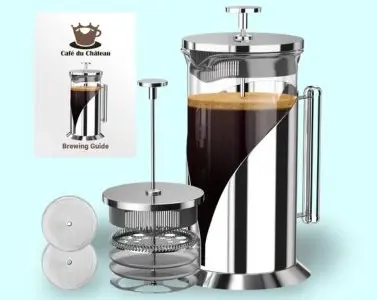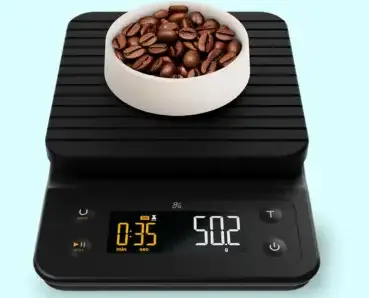With the right knowledge and home brewing essentials, anyone can transform their morning cup into a café-quality experience.
From selecting beans to perfecting extraction methods, understanding the essentials of home brewing ensures not only better taste but also a deeper connection with every sip.
Contents
- Why Home Brewing Is Gaining Popularity
- Benefits of Brewing Coffee at Home
- Understanding Coffee Fundamentals
- Choosing the Right Coffee Beans
- Essential Brewing Equipment
- Brewing Methods Explained
- Supporting Tools and Accessories
- Mastering the Brewing Process
- Enhancing the Coffee Experience
- Advanced Tips for Enthusiasts
- Maintenance and Care of Equipment
- Sustainability in Home Brewing
- Conclusion
- FAQs
Why Home Brewing Is Gaining Popularity
The rise of specialty coffee culture has made enthusiasts crave more control over their cup. Instead of relying on coffee shops, people now prefer experimenting at home to:
- Save money in the long run
- Customize flavors to personal taste
- Gain a better appreciation of coffee origins and methods
- Reduce waste with sustainable brewing choices
Benefits of Brewing Coffee at Home
Brewing coffee at home provides freshness, flexibility, and personalization unmatched by store-bought beverages. It allows you to:
- Select your own beans and roast level
- Adjust brew strength, grind size, and ratios
- Enjoy coffee at peak freshness
- Build a relaxing daily ritual

Understanding Coffee Fundamentals
The Science of Coffee Extraction
Extraction is the process of pulling soluble compounds from ground coffee into water. The balance between time, temperature, and grind size determines whether your brew is bitter, sour, or perfectly balanced.
Importance of Grind Size and Consistency
A uniform grind ensures even extraction. Too coarse leads to under-extraction (sour, weak coffee), while too fine can cause over-extraction (bitter, harsh taste).
Freshness: Beans vs. Ground Coffee
Whole beans retain their volatile oils and aromas far longer than pre-ground coffee. Grinding just before brewing is one of the most impactful steps for better flavor.
Choosing the Right Coffee Beans
Arabica vs. Robusta: Key Differences
- Arabica: Smooth, sweet, with fruity or floral notes; higher acidity.
- Robusta: Stronger, more bitter, with higher caffeine content; earthy flavors.
Single-Origin vs. Blends
- Single-Origin: Unique regional characteristics, often brighter and more nuanced.
- Blends: Balanced and consistent flavor profiles, designed for everyday brewing.
Roast Levels: Light, Medium, Dark
- Light Roast: Retains origin flavors, fruity and acidic.
- Medium Roast: Balanced, sweet, approachable.
- Dark Roast: Bold, smoky, less acidity, more bitterness.
How to Store Beans for Maximum Freshness
Store beans in airtight, opaque containers away from heat, light, and moisture. Avoid refrigeration; instead, purchase in smaller batches for maximum freshness.

Essential Brewing Equipment
Coffee Grinders: Blade vs. Burr
- Blade Grinder: Inexpensive but inconsistent.
- Burr Grinder: Delivers uniform grinds, essential for quality brewing.
Brewing Scales: Precision Matters
A digital scale ensures consistent coffee-to-water ratios, essential for repeatable results.
Kettles: Standard vs. Gooseneck
- Standard Kettle: Functional but limited precision.
- Gooseneck Kettle: Provides controlled pouring, ideal for pour-over.
Filters: Paper, Metal, or Cloth
- Paper: Clean, bright flavors but disposable.
- Metal: Rich, full-bodied cup with oils preserved.
- Cloth: Eco-friendly, requires proper maintenance.
Storage Containers and Canisters
Use vacuum-sealed or airtight canisters to protect beans from oxygen exposure.
Brewing Methods Explained
Drip Coffee Makers: Convenience and Consistency
Automatic coffee machines offer convenience, though quality varies with brand and features.
French Press: Rich and Full-Bodied Flavor
Produces bold, oily brews with a heavy mouthfeel. Best with coarse grind.
Pour-Over: Clean and Balanced Taste
Allows precision control over water flow, resulting in bright, complex flavors.
AeroPress: Portable and Versatile
Compact, travel-friendly, capable of producing espresso-like shots or smooth brews.
Espresso Machines: For the Coffee Purist
Delivers concentrated, creamy coffee; requires precise grind and tamping.
Cold Brew: Smooth and Refreshing
Brewed with cold water over 12–24 hours, resulting in low-acid, mellow coffee.
Supporting Tools and Accessories
- Coffee Scoops and Measuring Tools for accurate dosing
- Milk Frothers and Steam Wands to craft lattes and cappuccinos
- Thermometers for perfect water temperature control
- Travel Mugs and Reusable Cups for sustainability
Mastering the Brewing Process
Coffee-to-Water Ratio Guidelines
Standard: 1:15 to 1:17 ratio (1 gram coffee to 15–17 grams water). Adjust to taste.
Ideal Brewing Temperatures
Water temperature should range between 195°F–205°F (90°C–96°C).
Blooming: Why It Matters
Blooming releases carbon dioxide trapped in freshly roasted coffee, improving flavor extraction.
Common Brewing Mistakes to Avoid
- Using stale beans
- Incorrect grind size
- Wrong water temperature
- Ignoring ratios
Enhancing the Coffee Experience
Experimenting with Flavored Syrups and Spices
Add cinnamon, vanilla, or caramel for unique twists without overpowering the brew.
Alternative Milk Options and Frothing Techniques
Oat, almond, and soy milk provide creamy alternatives, especially when properly frothed.
Pairing Coffee with Food
- Light roast: pastries, fruits
- Medium roast: chocolate, nuts
- Dark roast: cheeses, rich desserts
Creating a Home Coffee Bar Setup
Design a dedicated coffee corner with organized tools, jars, and brewing devices for an elevated daily experience.
Advanced Tips for Enthusiasts
Dialing in Grind Size for Espresso
Espresso requires ultra-fine grind and consistent tamping for proper extraction.
Water Quality and Filtration Importance
Use filtered water free from chlorine and excess minerals to avoid flavor distortions.
Experimenting with Brew Times and Methods
Adjusting steep times allows discovery of hidden flavor notes.
Using Apps and Smart Devices for Precision
Smart scales and timers help track recipes and replicate perfect brews.
Maintenance and Care of Equipment
Cleaning Grinders and Brewers
Prevent oil buildup by regularly brushing grinders and rinsing brewers.
Descaling Espresso Machines
Use descaling solution monthly to prevent mineral deposits.
Proper Filter Replacement
Change filters on schedule to maintain water purity and taste.
Extending the Lifespan of Your Tools
Routine care and correct storage increase the durability of all coffee gear.
Sustainability in Home Brewing
Choosing Fair-Trade and Organic Beans
Support ethical sourcing while ensuring environmentally responsible farming practices.
Reusable Filters and Eco-Friendly Tools
Opt for metal or cloth filters to reduce waste.
Composting Coffee Grounds
Used grounds enrich soil, making them a valuable garden addition.
Reducing Waste with Smart Storage
Buy beans in smaller quantities and store them properly to avoid spoilage.
Conclusion
Home brewing is more than just making coffee—it is about craftsmanship, personalization, and sustainability.
By understanding beans, equipment, methods, and maintenance, enthusiasts can consistently create exceptional coffee at home. With experimentation and attention to detail, every cup becomes a journey of discovery.
FAQs
What’s the best coffee maker for beginners?
A pour-over or French press offers simplicity and control for newcomers.
How fine should I grind coffee for espresso vs. French press?
Espresso requires a fine grind, while French press needs a coarse grind.
Is filtered water better than tap for brewing?
Yes, filtered water improves clarity and flavor by removing impurities.
Can I make cold brew with any type of coffee beans?
Yes, but medium to dark roasts often yield the best cold brew flavor.
How do I know if my coffee beans are still fresh?
Fresh beans have a strong aroma and degas when brewed; stale beans taste flat.
What’s the ideal coffee-to-water ratio for drip brewing?
1:16 is a common ratio, but it can be adjusted to preference.
Do I need a scale to brew good coffee at home?
A scale ensures precision and consistency, highly recommended for serious brewers.
How often should I clean my coffee equipment?
Clean after every use and deep clean grinders or espresso machines weekly.
Can I use flavored syrups without affecting coffee quality?
Yes, syrups can complement coffee if used in moderation.
What’s the most budget-friendly way to start home brewing?
A French press and burr grinder provide excellent quality at low cost.


